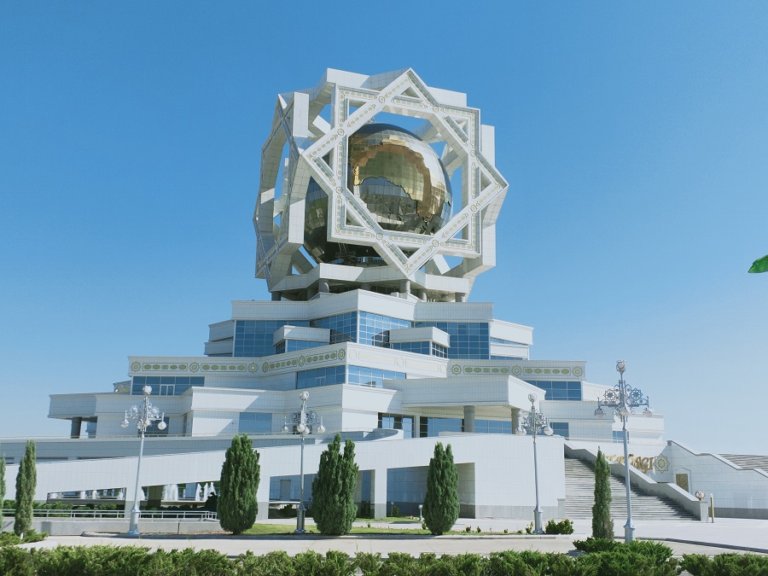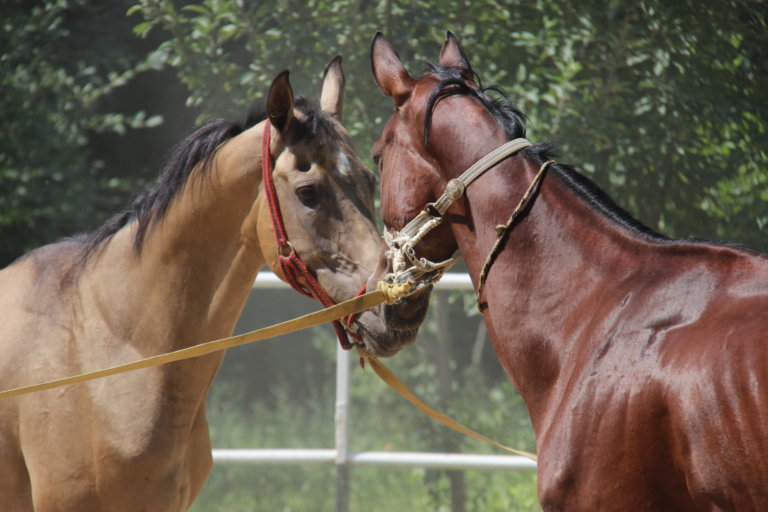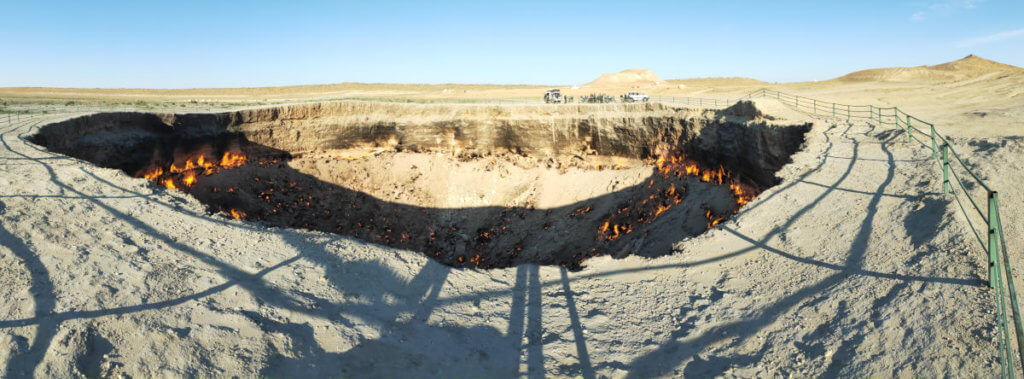
Khiva to Kunya-Urgench and Darvaza Day 43 and 44 11th and 12th June
Heading to the Turkmenistan border today. Goodbye to Uzbekistan for the last time and on to our final ‘Stan’.
After getting lost along the way to Turkmenistan border and asking for directions our driver finally drops us close to the border. We walk through Uzbek immigration and exit through the endless but friendly checkpoints. On across no-man’s land and into Turkmenistan where a young military man demands our invitation letter. We get sent over to sit under a tree until a bus arrives for which we pay a dollar each to get to the actual Immigration centre. We get ordered into a room past a group of resentful locals ( don’t blame them) into a room with a large Polish group. Then the lovely Anna, our new tour guide appears. The group of Poles part and I get ushered into another room to sign 18 pieces (No carbon paper) of paper to get our visas. Back I go to retrieve Mel and contrary to worst predictions we sail through customs and immigration and out to meet Andre our driver.
Anna gives us a summary of Turkmenistan and explains her own background. Her father was from the Ukraine and her mother from Belarus, she has lived all her life in Turkmenistan apart from a year exchange in the United States.
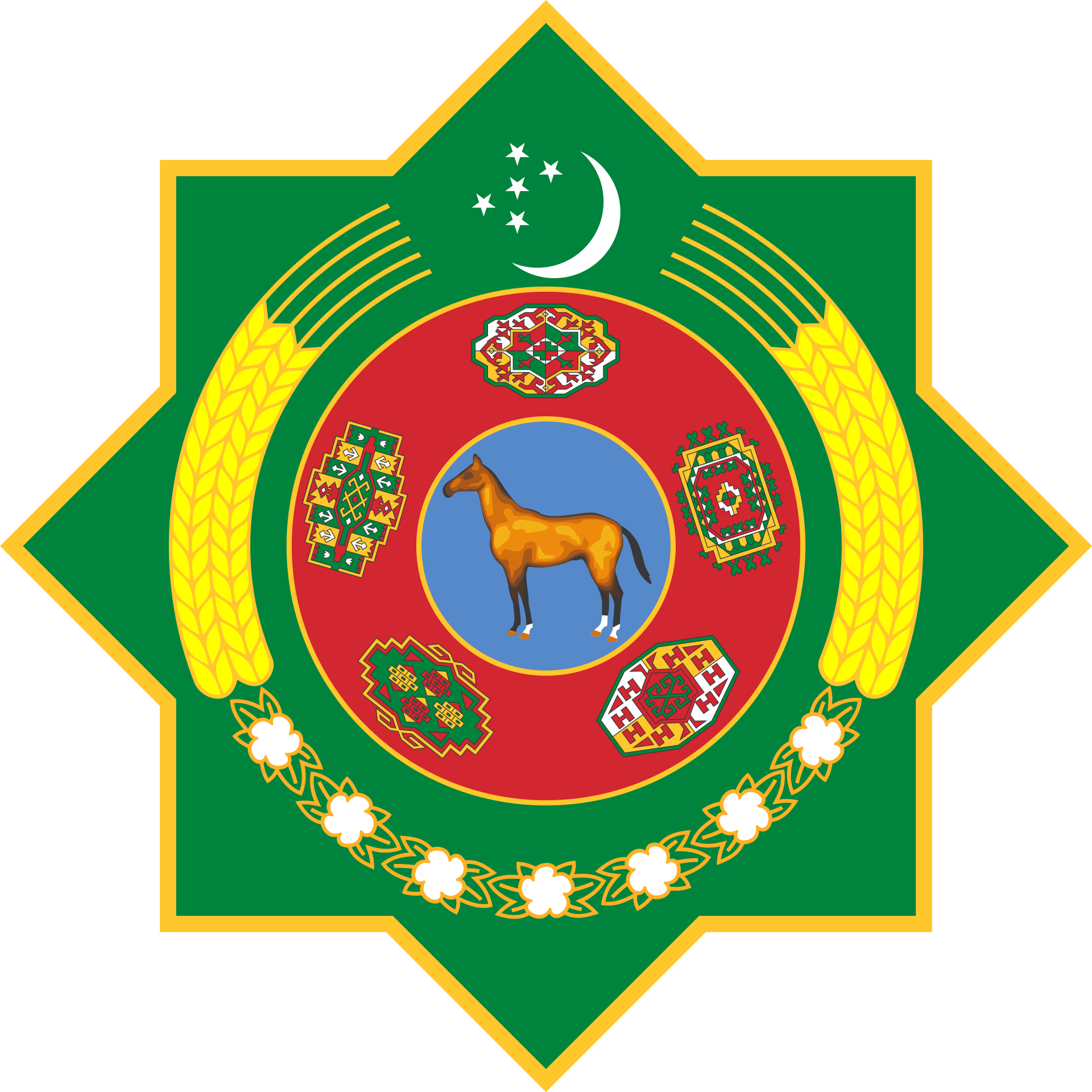
The official emblem gives a few clues to the country and whilst we received some differing explanations from a variety of sources the main things to understand are the country’s dependence on cotton and wheat. It’s cultural identification through the traditional carpet. The patterns represent regional carpet-making – linked to the five main tribal groupings in the country. The horse in the centre (which is actually a representation of the first President’s horse) showcases the famous Akhel-Tek breed a world famous horse that has been described as the one of the world’s oldest horse breed.
Our first stop was the Konye-Urgench (Kunye Urgench, Old Urgench Urganji) monument complex, a UNESCO listed area. Magnificent. It became one of my favourites because it has largely been maintained as-is. Different types of buildings are laid out over the site – now a desert. You can more clearly see the building style as was intended without the renovations tacked on to it. The immediate environment is not compromised by shops and the other details of modern city life. This was a very different experience to visiting mosques and mausoleums in the other countries.
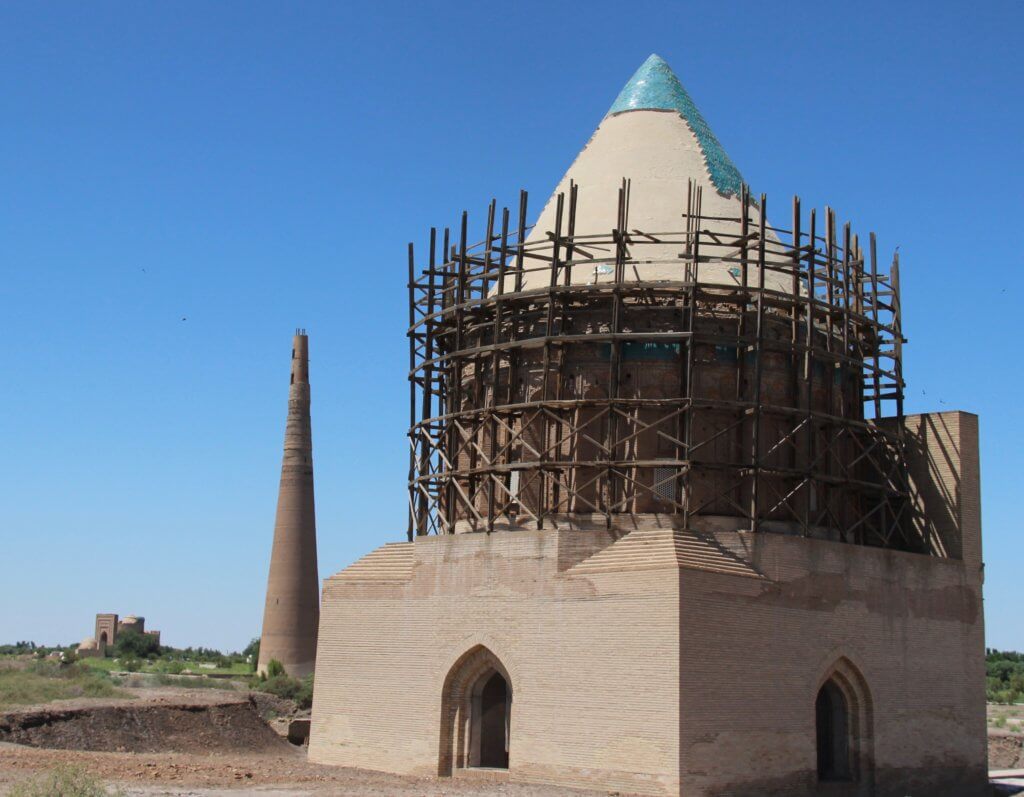

It was a fun experience – Anna gave us some great background and whilst we were visiting the old mosque about fifty pilgrims arrived at the same time. There was lots of discussion about where we were from and lots of laughter and photos.
The site itself is protected by Unesco and consists of several fortresses, at least seven mausoleums, a couple of madrassas and two minarets.

Anna also pointed out a building marked as “Unknown”.The story appeared to be that no one knows the original purpose of the building and Genghis Khan destroyed all of the original except the entrance. Some clever entrepreneur then built a caravanserai (an ancient Silk Road motel) behind it. Subsequently in the debris pit behind the entrance are the remains of smashed ceramic pots dating back to the 14th century. This reflects that the approach has been to basically excavate enough and then leave the site alone, Digging has been hampered by the discovery of ancient human remains which indicates it may have been a major burial area.
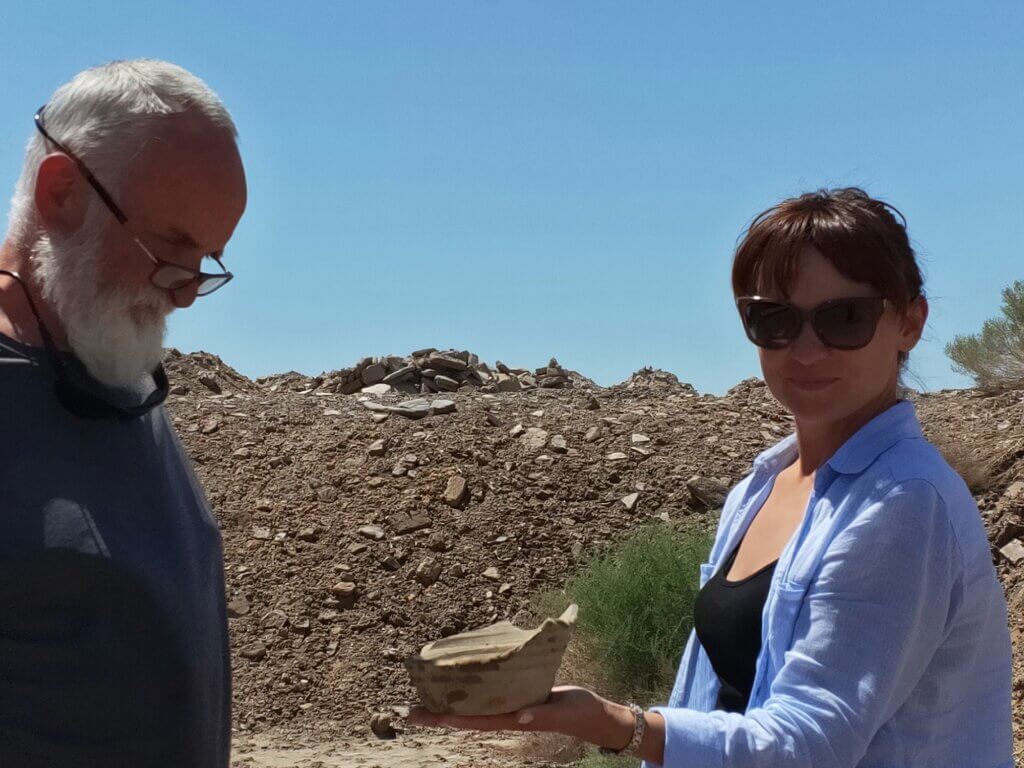
After a simple lunch at a roadside cafe, we headed to our overnight camping site, near to the village of Darvaza, where the famous (or is it infamous) crater of flames provides a tourist attraction. The story of how it occurred and why it has been burning for forty years can be read here Atlas Obscura and here Smithsonian.
As night fell you could see the eerie glow from the crater, closer up the sound of hundreds of small fires burning adding to the sense of strangeness. From the top of a nearby hill we looked down into the pit. While sitting watching the show we met a couple of young Canadian guys, Ian and Alex. Both guides from Churchill, Canada – famous for its polar bear adventures.


As you can imagine stories about Darvaza abound – our favourite was the one about the drunk who fell into the pit and had to have a crane rescue him. Our guide swore that this was a true story and that she had seen a video of the crane rescue.
Next morning an early start for our long drive to Ashgabat. First a visit to two other pits – one with boiling mud (very New Zealand) and the other full of water (and unfortunately plastic bottles). And on and on for the long drive into Ashgabat. On the outer city limits, we had to stop at a carwash! Legislation prevents dirty cars from entering the city. It also prevents cars from entering the city if the car is not registered in the Ashgabat region. In that case, you have to resort to a cab. But wait there’s more! Within the Ashgabat city limits, you can only own a car that is either white or grey!!
The first impression of the city is the number of parks and broad boulevards and the pure white marble which either have been used to cover old buildings or build the new ones-just amazing.

After being dropped off we headed out for lunch. Very few shops, or restaurants have outside signage – good in some ways but difficult to find what you want if you are not familiar with the city. We finally found a cafe in the park and settled down as the only customers when who should walk in but the Canadian guys from the night before. A pleasant chat ensured before we headed back through the Russian Market to the hotel.
PHOTOS OF OUR TIME IN TURKMENISTAN
